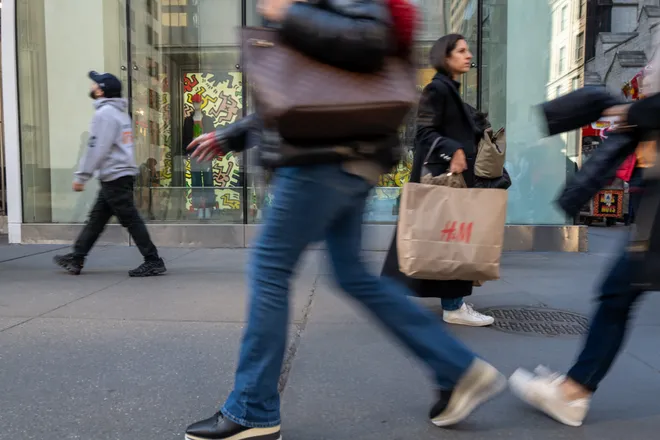Consumer credit grows at moderate pace as Fed rate hikes take hold.
Consumer credit rose in June as Americans took out larger car loans but cut back on credit card spending, according to the latest Federal Reserve data.
Overall credit increased $17.8 billion, topping economists' average forecast for a $13 billion gain, to $4.977 trillion in June, the Fed said late Monday. May's borrowing also was revised up by about $2 billion.
Though consumer credit rose in June, helped by brisk car sales in June, overall credit increases have moderated over the past year, showing the Fed's aggressive interest rate hikes to squelch spending and lower inflation are working.
Are consumers using more credit?
Overall consumer credit rose in June by $18.5 billion to $3.735 trillion, but mostly because of a jump in "nonrevolving credit." That refers to lump sum loans - such as student loans, mortgages are car loans - that are paid back only once.
Learn more: Best current CD rates
The value of loans for vehicle purchases reached a record high in the three months leading up to June. Meanwhile, student loans fell.
The pace of consumer credit growth has been slowing though in the past year.
Is credit card debt surging?
Credit card and other short-term debt fell in June by $600 million, the first decline since April 2021, to $1.262 trillion.
The decline in credit card debt "likely reflects the sharp increase in interest rates charged for credit cards, which as of May was 20.68% – the highest since the Fed's data begins in 1972 and up from 14.51% in January 2022," said James Knightley, investment bank ING's chief international economist, in a report.
Does the slowdown in consumer credit mean we can avoid recession?
Not necessarily. "Given consumer spending is two-thirds of economic activity in the U.S., this is a troubling signal," Knightley said.
Consumers spending has remained resilient despite 40-year high inflation because of excess savings built up during the pandemic when Americans had few places to spend their money. If savings dwindle as they're expected to, and interest rates remain high, spending can come to an abrupt halt and send the economy into recession, some economists say.
"We think lower-income households have fully exhausted their excess savings as of the second quarter (or three months to June), while middle- and higher-income households are less willing to spend their remaining excess savings," investment bank Morgan Stanley's economists said in a note.
Student loan repayments resuming this fall will likely squeeze spending further, they said.
Recession watch:Where is the US economy headed? These 4 factors hold the answer. Here's what to watch for.

What might help consumers stay on track and the U.S. avoid recession?
Only if incomes rise faster than inflation for a significant period will consumers be able to carry on with their spending, Knightley said.
"While this is possible, it highlights again that the risks for economic activity, particularly for the household sector, remain to the downside," he said.
But with the labor market softening, income growth may be limited, Morgan Stanley said.
Medora Lee is a money, markets, and personal finance reporter at USA TODAY. You can reach her at mjlee@usatoday.com and subscribe to our free Daily Money newsletter for personal finance tips and business news every Monday through Friday morning.
Disclaimer: The copyright of this article belongs to the original author. Reposting this article is solely for the purpose of information dissemination and does not constitute any investment advice. If there is any infringement, please contact us immediately. We will make corrections or deletions as necessary. Thank you.







